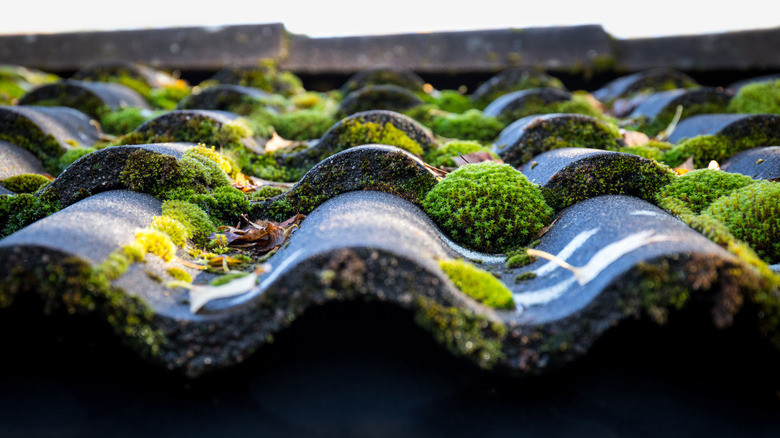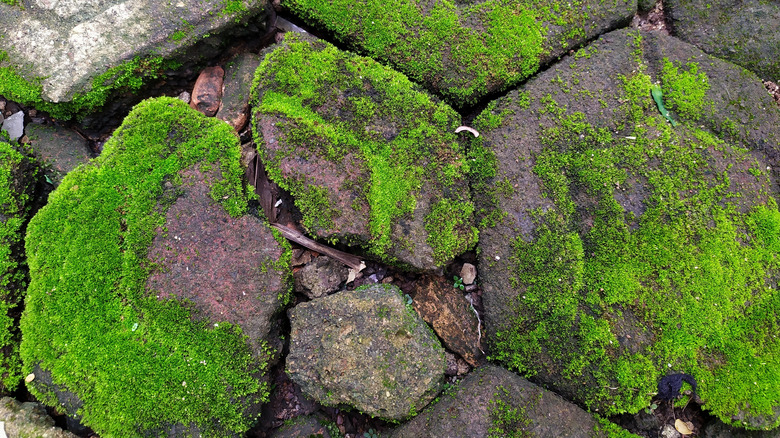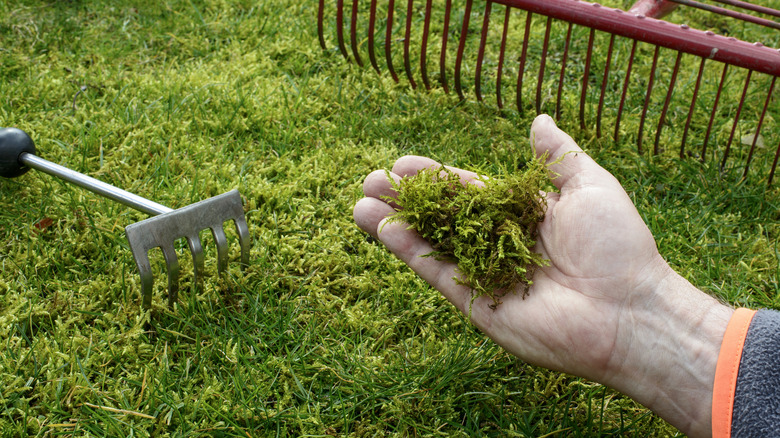The Gardening Hack That Will Remove Moss
Moss is a resilient plant that can grow in many different climates. Unlike the stereotypical image of a plant, it doesn't have any roots or flowers, rather, it actually grows through spores like mushrooms. Since it doesn't need soil to live, it will happily grow in many different locations and is adept at surviving in extreme weather.
Moss can grow in your garden or lawn, on concrete, on your patio, and even on your roof. When other plants have died, it's not unusual to find that moss has taken over their place. While moss isn't harmful to your yard or plants, it probably doesn't match the aesthetics of your landscaping. You also may want to remove it from pavers and sidewalks since it can be a physical hazard — as it absorbs moisture, it can become slippery to walk on. Moss can also be a sign that something is wrong in your yard, therefore, you will need to identify the cause of the problem if you want to remove it permanently.
Why do you have moss
There are several reasons why you may be dealing with moss in your yard. It thrives in a cool, moist environment, so you first must address any drainage problems and ensure that your yard has good air circulation. A great way to do this is by trimming overgrown trees that block the sun, and if you are dealing with moss in your lawn, you may want to aerate the soil. Moreover, having thin, weak grass also opens up space for moss to move in.
The pH level of your yard is another critical factor. The ideal environment for a lawn is a pH of between 6.5 and 7.0. If that number drops too low, your grass will begin to thin, exposing the soil. Once the pH drops to between 5.0 and 5.5, your lawn becomes a suitable environment for moss to grow, and you'll notice it covering the dead patches of grass. If you want a moss-free yard, you'll need to first remove it and then find the problem, so it doesn't grow back.
How to get rid of moss
Getting rid of moss is an easy but time-consuming process. You can go right in with a rake and pull it all up if it's not too stubborn. This works best for yards, but if you have moss growing on and between your pavers, you'll need a wire brush. To get it off your deck, sidewalks, and driveway, you can even try power washing it off. Sometimes with roofs, you can simply pull it off with your hands.
If an incorrect pH level is the cause of moss growth in your garden, you can remedy the problem with liquid lime. It will adjust the level of your lawn, so the new seeds you throw down have a better chance of sprouting. Sometimes, especially on paths and driveways, moss is strong-willed and doesn't want to go away. That's when you can use this last method, but it won't work for areas where you still want plants to grow. Dilute 20 ounces of bleach with 5 gallons of water. Then spray the solution and leave it to soak for about 15 minutes — after a few hours have passed, the moss should be yellow and dead, making it easier to sweep away.


